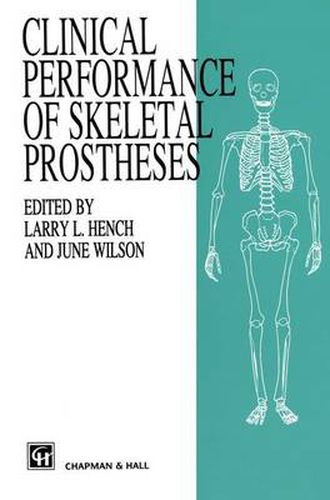Readings Newsletter
Become a Readings Member to make your shopping experience even easier.
Sign in or sign up for free!
You’re not far away from qualifying for FREE standard shipping within Australia
You’ve qualified for FREE standard shipping within Australia
The cart is loading…






This title is printed to order. This book may have been self-published. If so, we cannot guarantee the quality of the content. In the main most books will have gone through the editing process however some may not. We therefore suggest that you be aware of this before ordering this book. If in doubt check either the author or publisher’s details as we are unable to accept any returns unless they are faulty. Please contact us if you have any questions.
Larry L. Hench June Wilson OBJECTIVE Millions of people presently enjoy an improved quality of life due to prostheses which repair, augment or replace parts of their skeletal system: bones, joints, teeth, etc. However, all replacement parts have a finite probability of survival. The goal of this book is to compare the survivability data for various skeletal prosthesis systems. All data derive from previously published clinical studies. Where possible statistical comparisons are made and the reasons for failure are discussed. THE NEED FOR SKELETAL PROSTHESES We are an aging population with more than 100 million people in the U. S. and Europe over the age of 50 years. An unfortunate consequence of aging is a progressive deterioration of the quality of skeletal tissues. From the age of 30 years there is a decrease in bone mass for both men and women (Fig. 1. 1). However, for women it is much greater and between 40 and 60 years of age the rate of deterioration of long bones and vertebrae of women is especially severe due to hormonal changes. By the age of 70 most women will have lost from 35 to 60% of their bone mass. The loss of volume of cancellous or trabecular bone leads to a large decrease in mechanical compressive strength (Fig. 1. 2). The clinical consequence is an increasing incidence of vertebral collapse. Cortical bone decreases in tensile strength with age (Fig. 1.
$9.00 standard shipping within Australia
FREE standard shipping within Australia for orders over $100.00
Express & International shipping calculated at checkout
This title is printed to order. This book may have been self-published. If so, we cannot guarantee the quality of the content. In the main most books will have gone through the editing process however some may not. We therefore suggest that you be aware of this before ordering this book. If in doubt check either the author or publisher’s details as we are unable to accept any returns unless they are faulty. Please contact us if you have any questions.
Larry L. Hench June Wilson OBJECTIVE Millions of people presently enjoy an improved quality of life due to prostheses which repair, augment or replace parts of their skeletal system: bones, joints, teeth, etc. However, all replacement parts have a finite probability of survival. The goal of this book is to compare the survivability data for various skeletal prosthesis systems. All data derive from previously published clinical studies. Where possible statistical comparisons are made and the reasons for failure are discussed. THE NEED FOR SKELETAL PROSTHESES We are an aging population with more than 100 million people in the U. S. and Europe over the age of 50 years. An unfortunate consequence of aging is a progressive deterioration of the quality of skeletal tissues. From the age of 30 years there is a decrease in bone mass for both men and women (Fig. 1. 1). However, for women it is much greater and between 40 and 60 years of age the rate of deterioration of long bones and vertebrae of women is especially severe due to hormonal changes. By the age of 70 most women will have lost from 35 to 60% of their bone mass. The loss of volume of cancellous or trabecular bone leads to a large decrease in mechanical compressive strength (Fig. 1. 2). The clinical consequence is an increasing incidence of vertebral collapse. Cortical bone decreases in tensile strength with age (Fig. 1.